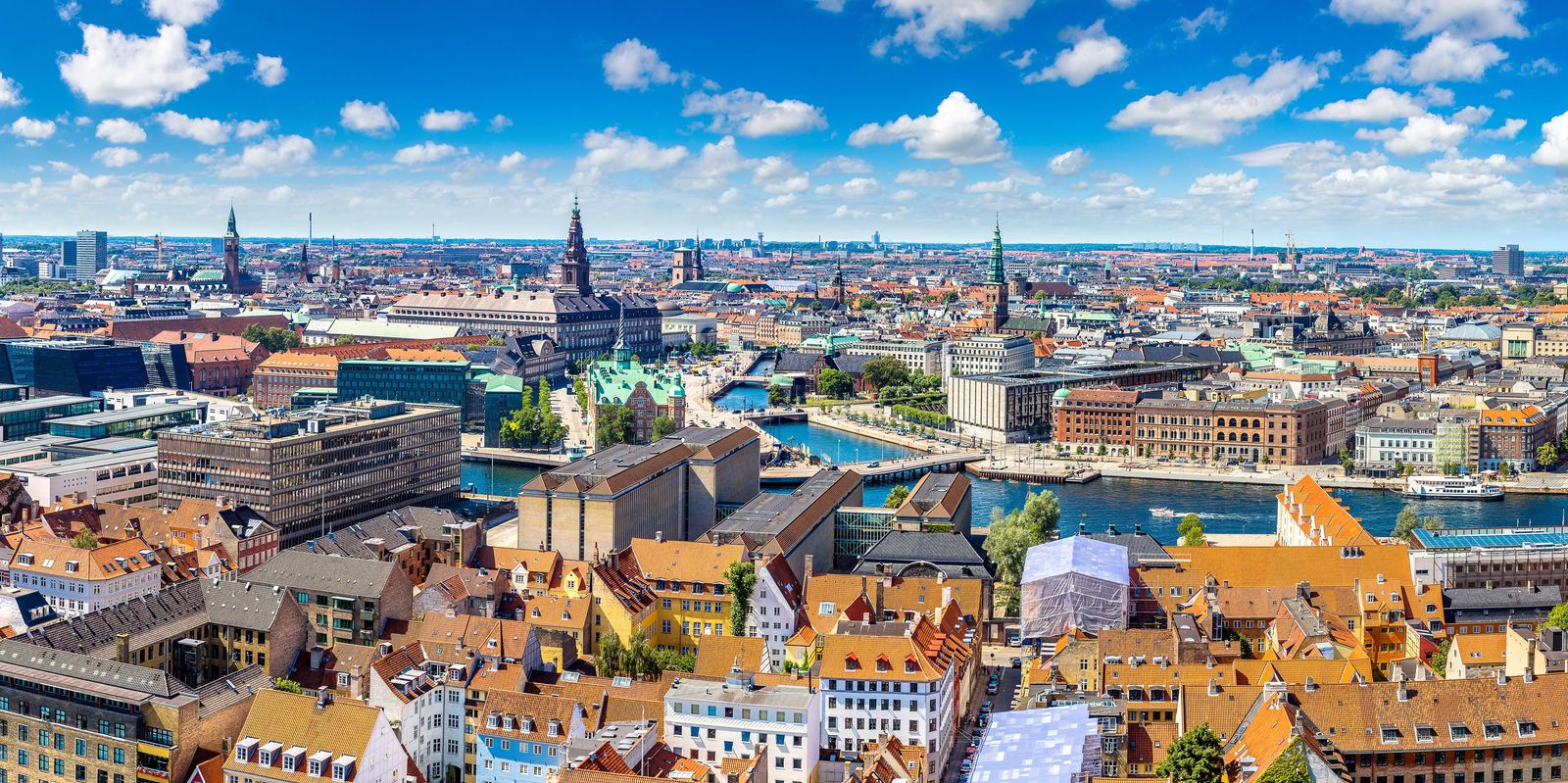
Unique Things To See In Copenhagen Denmark
Once a former fishing village, Denmark is also a story telling inspiration with castles that helped inspire Hamlet, inspired Hans Christian Andersen to write The Little Mermaid, and is home to the free city of Christiania a Marijuana Mecca. Copenhagen also is famous for Michelin star Restaurants, 2 of the oldest amusement parks in the world, voted as the happiest country, and home to LEGO. Let me show you the around this quirky city & the most unique things to see in Copenhagen Denmark.
Nyhaun Harbor & Longest Bar In The World
When you come to Copenhagen the first stop I suggest is an early morning visit to Nyhaven Harbour, meaning ‘New Harbor’. While it is a very touristy area, it is the classic Copenhagen card everyone gets with the colorful houses in the background.
Built by King Christian the 5th in the 17th century, the Harbour houses many historical wooden boats near King’s Square. In fact, it is considered a Veteran ship and museum harbor.
This particular harbor was notorious for beers, bars, scallywags, sailors, and prostitutes. However, not everyone who lived here was notorious for trouble, the famous author Hans Christen Anderson who wrote The Little Mermaid and Thumbelina lived in house 10 at first, then moved to 67, and lastly in house 18 for the last years of his life collecting tales from these folk that he turned into stories. You can see a memorial plaque on the house commemorating his time here.
House #9 is the oldest of the colorful townhomes dating back to 1681. If you turn to the southern side of the harbor you can see mansions of the wealthy that live here, and on the corner you will find Charlottesburg Palace.
Today it houses both trendy people and patrons who love to visit the longest bar in Scandinavia. You can find cafes, music and dancing available here 24 hours a day.
The anchor you see at the end of the harbor honors the 1,700 sailors and officers for Denmark that gave their lives during WWII.
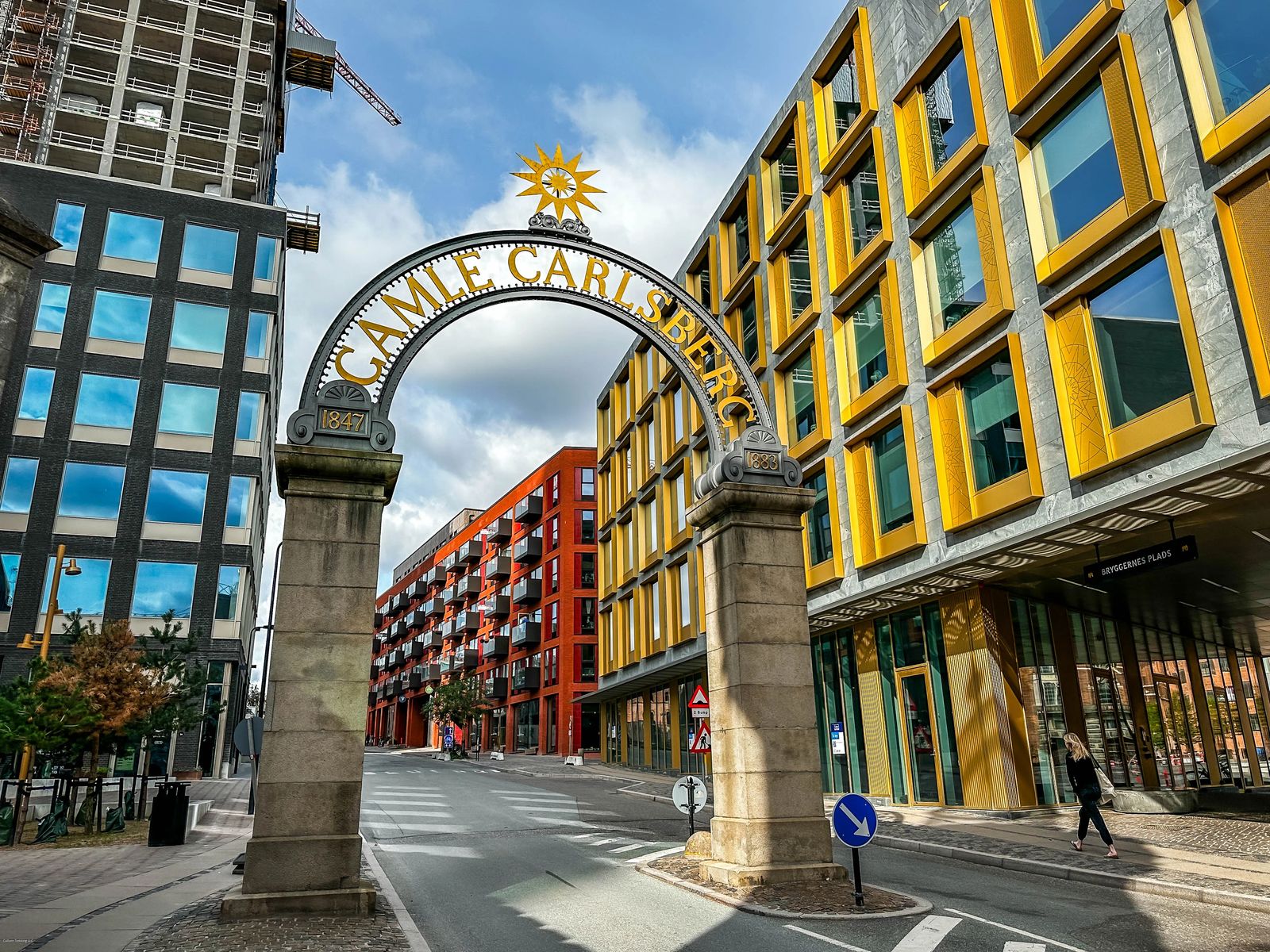
Carlsberg Brewery
Founded in 1847 by J.C. Jacobsen and his son Carl it remains an internationally renowned brewery just outside of Copenhagen city center. You may know their brand by other names such as Tuborg, Kronenbourg, Somersby Cider, Holsten, Neptun, Belgian Grimbergen and 500 other local beers.
It isn't just the beer they are famous for, it is also the dedication to pursuing scientific research. Nearly 30% of the revenue from Carlsberg Brewery goes to scientific research. One scientific discovery was the yeast used to make a pale lager, Saccharomyces carlsbergensis, that was discovered in the Carlsberg labs in 1883. They also helped develop the concept of pH and made significant advances in protein chemistry.
Carlsberg Brewery has several parking lots if you decide to drive yourself, and costs around $5-$10 that can be paid by card. Walk around the area, see the Elephant gate, the dedication plaques, and grab a burger at the famous Gasoline Grill.
I personally didn't go on a tour of the brewery itself as we didn't have time with our itinerary that day, but if I could do it again - I would DEFINITELY take a guided tour of the brewery and the grounds. When we were walking around on our own, I genuinely felt we were missing so so many important facts.
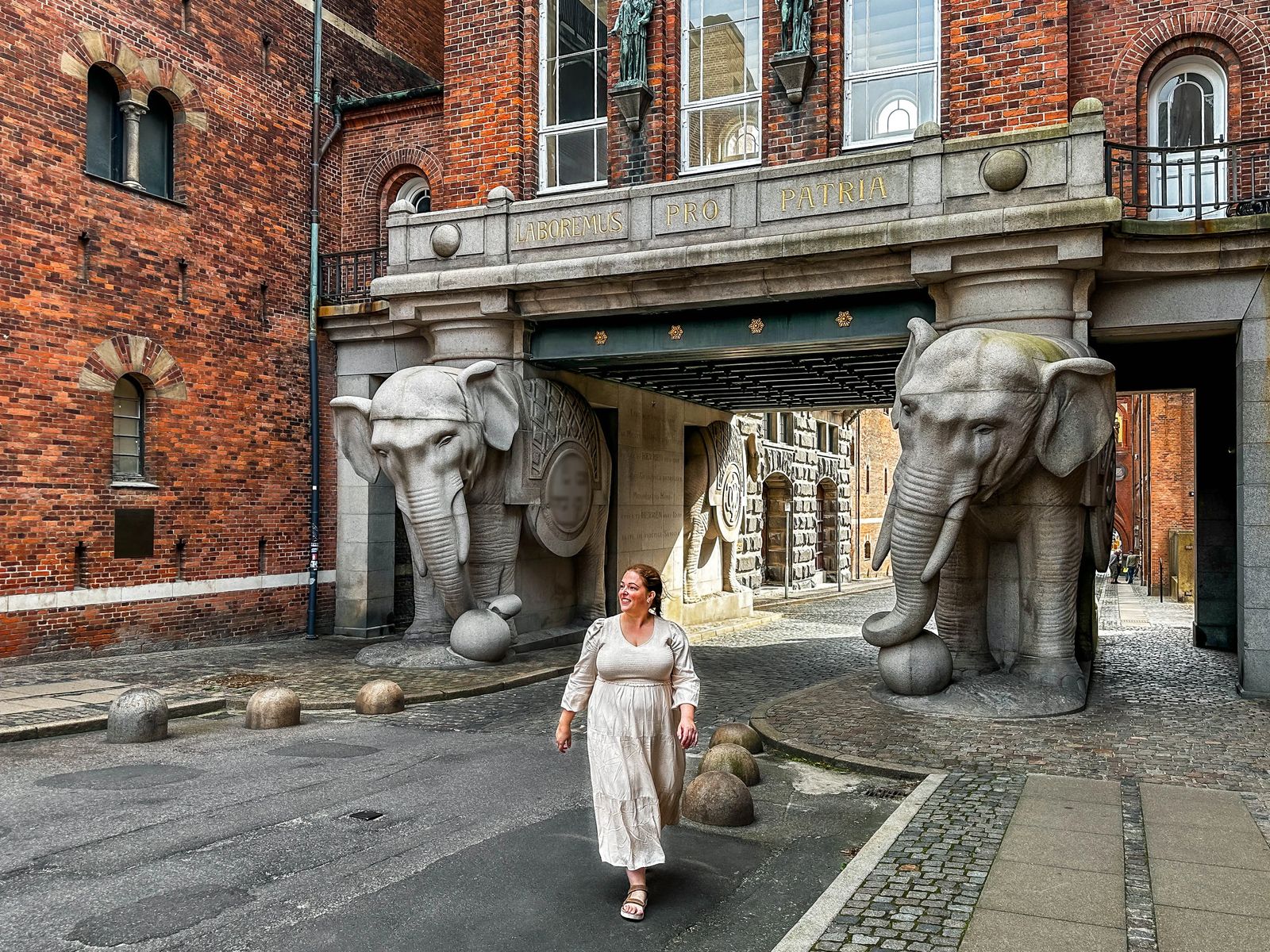
Elephant Gate
Next to Carlsberg Brewery are four life-sized elephants with swastikas on two of them, and prior to WWII were used in their logo. Now before you freak out about it, the Elephants were built in 1901, way before WWII. The swastika comes from the Sanskrit word that means luck or auspicious object.
After World War II the swastika was removed from the Carlsberg logo, but the remnants can still be seen on the sides of the Elephant sculptures here.
Each elephant has the initials of one of Carl’s four remaining children who were still alive at the time this gate was built. The elephants were supposed to represent stability, vigor, and loyalty.
The tower above the gate had a water tower, herb silo but is now empty with nothing in it.

Tivoli Gardens
Tivoli Gardens opened in 1843, is the second-oldest amusement park in the world (after nearby Dyrehavsbakken, which opened in 1583).
Tivoli, with its merry-go-round and boat rides, resident symphony orchestra, and Chinese harlequin theater (which is designed like a peacock), is the most visited amusement park in Scandinavia. At night its gardens lit up with thousands of tiny colorful lights.
King Christian VIII commissioned Georg Cartensen to build the amusement park with the justification of funds being, "When people are amused, they do not think about polotics".
Famous folks that you may recognize played music here include Michael Jackson and the Beatles, and was a major source of inspiration for Walt Disney creating Disneyland.
The Star Flyer, The flying Trunk, and Rutschebanen, which is the oldest roller coaster in Europe that is still in use. To ride the rides you do have to either pay for each ride individually at the entrance of the ride with a card - OR (my recommendation - is to buy a ride pass so you can ride all the rides.
As of 2024 Ticket Prices at Tivoli are:
Ride Pass AND an Entrance ticket together will cost around $61 (419 DKK)
Ride Pass only is $44 (299 DKK)
Entrance Ticket only is $21 (140 DKK)
Individual rides will cost you anywhere from $9 to $13 per ride and there are 30 rides in Tivoli, this includes a haunted house.
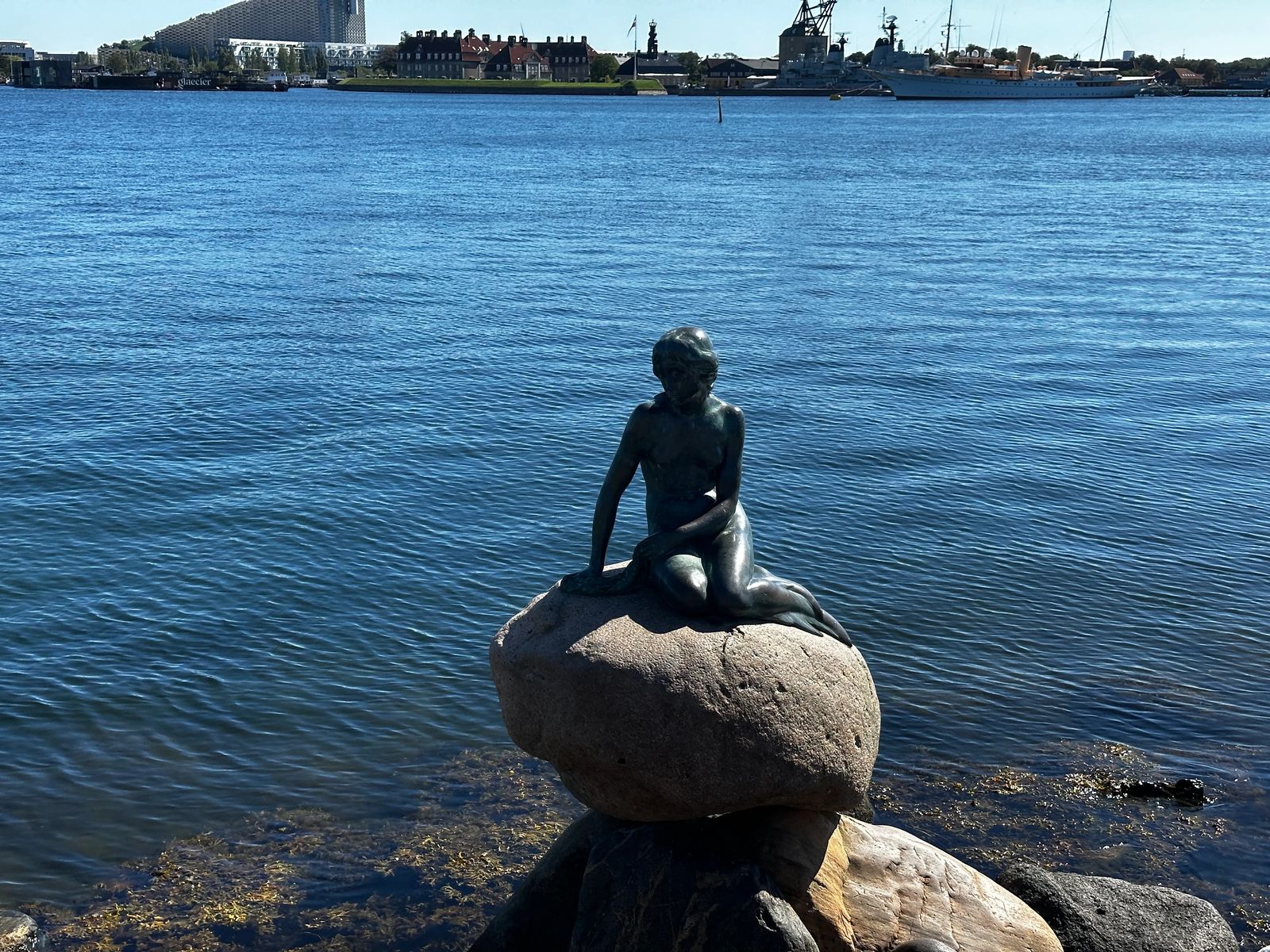
Little Mermaid Statue & The Ski Resort Powerplant
Located at Langelinie Pier you will find a very SMALL 4ft tall (child-like) statue of Hans Christen Anderson’s Little Mermaid Statue. It was erected in 1913 and quickly became an icon of this city. She stares longingly out to catch a glimpse of her beloved prince to return to her. Despite the hardship of waiting, she has also endured quite a bit of vandalism, head lopped off a few times, arm sawed off, and paint poured on her — honestly, what is wrong with people….
To get to the Little Mermaid statue you will need to either take the water taxi or the train. I recommend the water taxi because it is a way to save money on seeing the coastal waters of Copenhagen vs a canal tour. A full day for a ticket on public transport is around $23 (as of 2024) and this does include the water taxi. JUST MAKE SURE you get on the correct water taxi, unlike us, and we ended up having to take the train anyway. Make sure you take the 992 water taxi if you are coming from Nyhaven to see the statue, 991 takes you in the opposite direction, but there are no postings saying which boat takes you where (that I could find).
It is really easy to use public transport in Copenhagen, once you get to the Østerport station, where some people say you can take a bus then a 10 minute walk, or you can just walk about 30 minutes to the mermaid. Keep in mind that the walk is in full exposure to the sun to get there and in the heat of summer can get quite hot to do so.
Across from the Little Mermaid Statue is also the power plant of Copenhagen, that also doubles as a rock climbing and skiing location. Talk about efficient use of space (albiet a bit odd to ski and climb at a power plant).
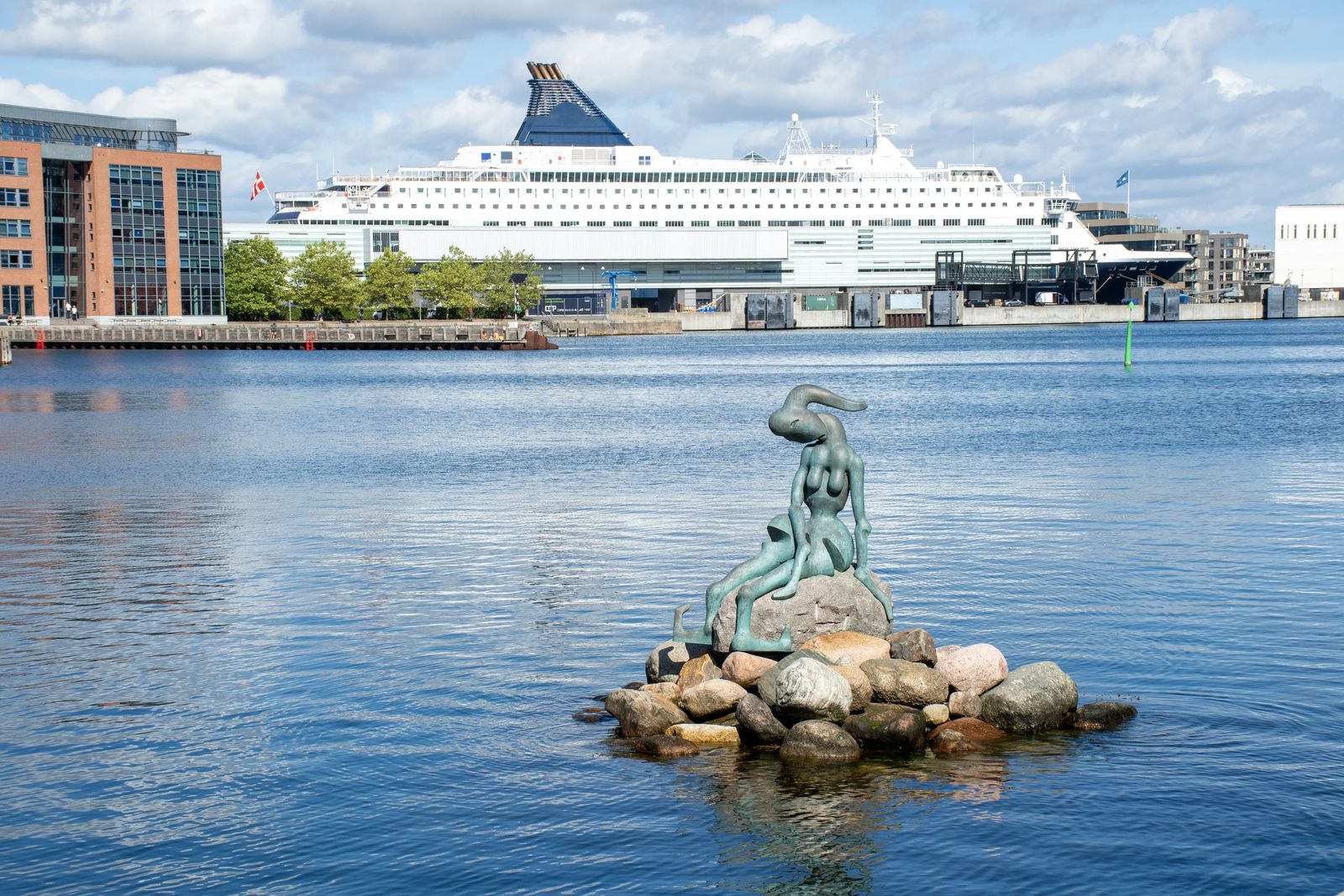
Genetically Modified Mermaid Statue
Location: Langelinie Alle 17 Copenhagen
Along with contorted abstract sculptures of Adam, Eve, Mary Magdalene, Christ, a pregnant man, and the genetically Modified Little Mermaid - commissioned in 2006 by Bjorn Norgaard - a professor at the nearby Fine Arts School. These statues are said to take a look at the provocative and humorous postmodern society (in politically correct terms), really the GM-Mermaid looks like a big middle finger to the Little Mermaid - it is quite comical in my opinion.
To get to the GM-Mermaid it is about a 15 minute walk from the original Little Mermaid statue. So if you're in the area take a gander.
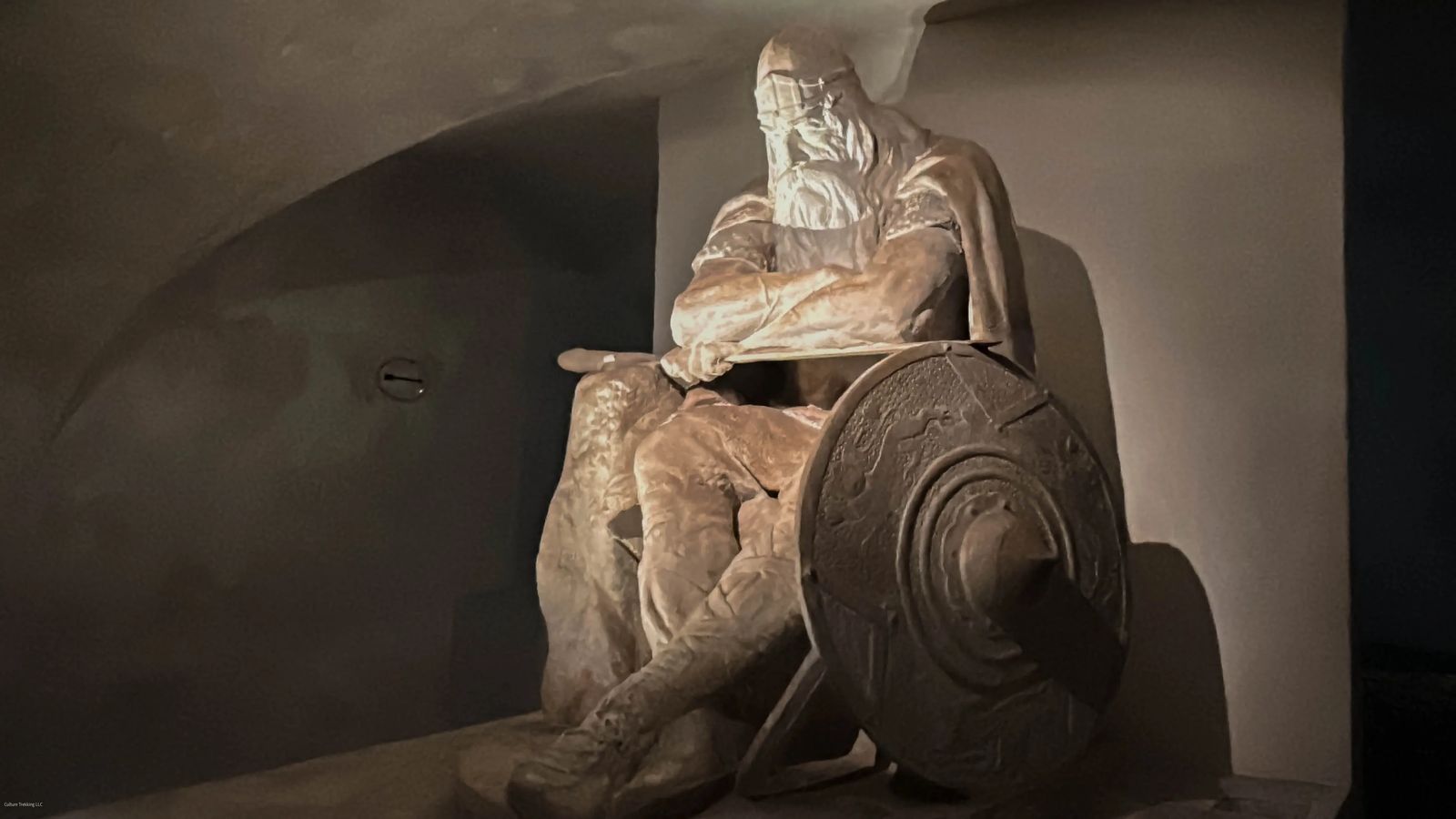
Kronborg Castle
Kronborg Castle is a bit of a drive from Copenhagen (1 hour) but I wanted to briefly mention it as it is a UNESCO site and considered one of the most important Renaissance castles in Northern Europe. It is also said to be the Castle that helped inspire Hamlet.
The island it is on is called Zealand and is the narrowest point of the Oresund, and was also the area that controlled the Baltic Sea.
Built by King Eric VII in 1420, King Frederick II made signifcant renovations to it in 1574 which gave it the embellished Renaissance look. It did burn down (partially) in 1629, but King Christian IV had it rebuilt quickly because it was so integral to the seafaring trade. The castle was ransacked by the Swedes in 1785, and much of the prized royal possessions inside were stolen. After such a devastating blow, the royals that stayed here left, and in 1785 was converted to Army barracks. After many years of service to the nation, the castle was then converted to a museum in 1923 and opened its doors to the public.
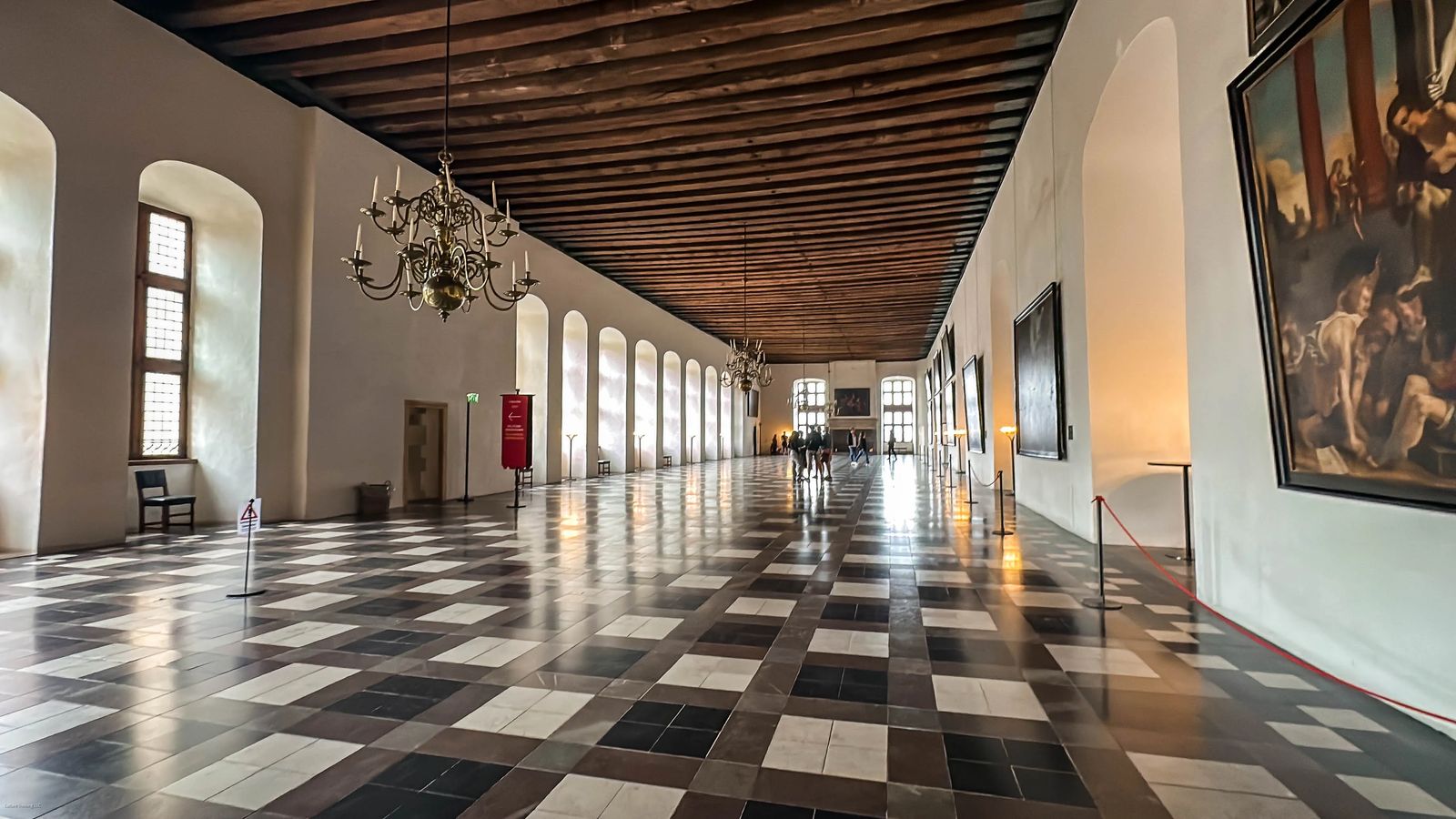
The castle grounds and exterior are quite stunning, right on the coastline with a small farmers market, grocery store, and food court. Parking can be a bit confusing, but we just followed someone else to park in a stall near the food court and then checked to make sure there weren't any tickets or stickers on the other cars near us. In the end we didn't get ticketed, but just wanted to mention it.
Tickets to get into the castle are 79 DKK (~$12), kids do get a discount but they may not like going inside anyway to be honest. The interior isn't as lavish as you will find in Fredericksborg Castle if I'm honest. They do have some interesting manniquins with period clothing, sparsely decorated rooms, and some informative explanations on each room on the wall.
The highlight of this castle though, is its ties to Hamlet, as well as the giant statue in the basement - Oiger, a Dane - who is said will rise to defend Denmark if it is ever attacked. The statue was quite impressive & I like the story behind it. Overall I'm glad I visited the castle, and was able to hear about the different political ties and royalty that stayed in the castle over the hundreds of years. I don't know that I would personally pay upwards of $500 for a tour from Copenhagen though. If you ARE planning on renting a car anyway and already doing the loop through Sweden then it definitely is a place to stop for sure.
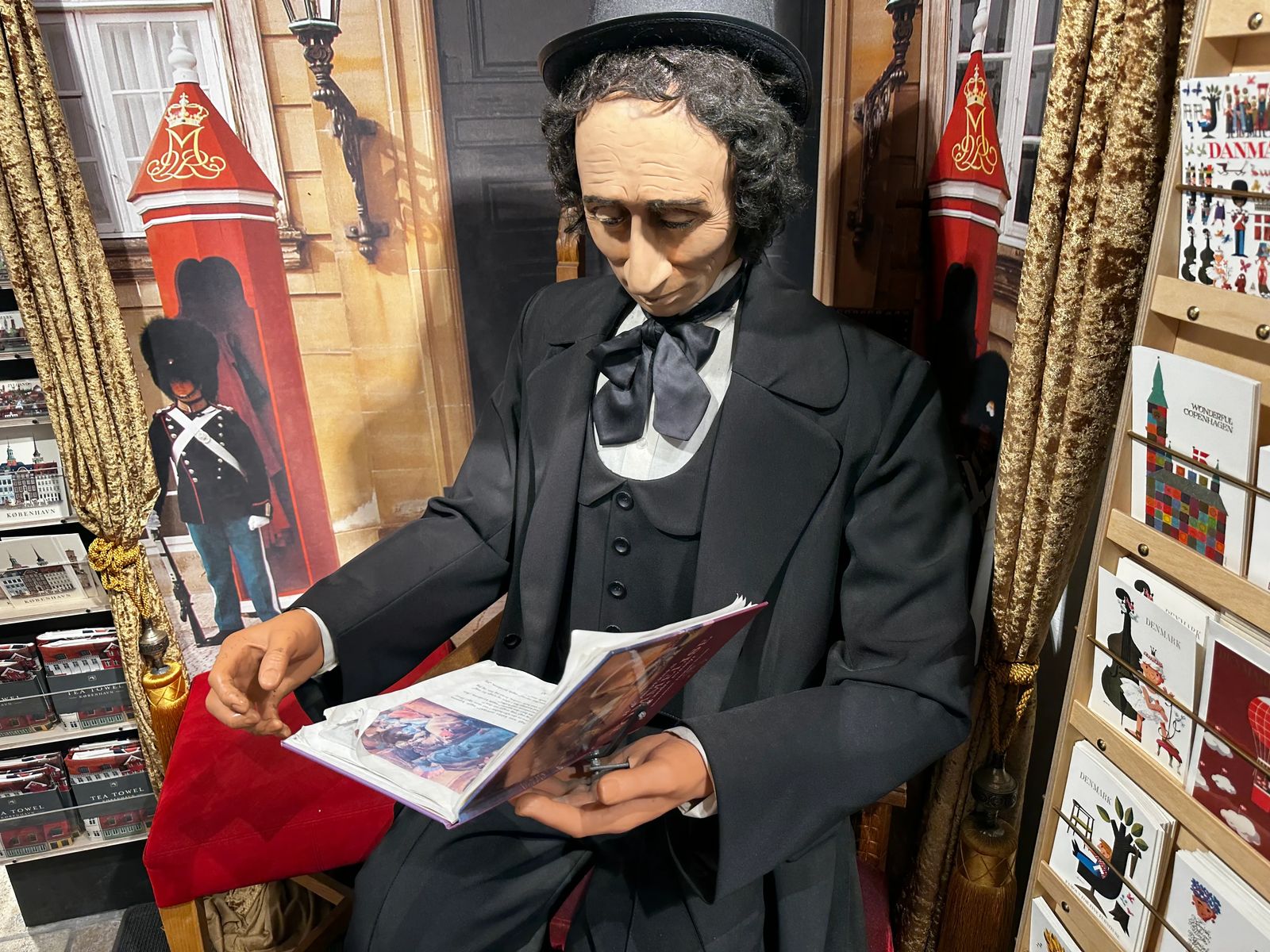
Hans Christen Anderson Home
The famous author, Hans Christian Anderson, who wrote the Little Mermaid and Thumbalina lived in house 10 at first, then house 67, and lastly in house 18 in the last years of his life. He collected tales from these scallywags, that he turned into stories. You can see a memorial plaque on the house commemorating his time here.
In the old basement of the house there is a little shop with a mannequin of him reading a book. If you collect children's books, then this is where you can find some of the books.
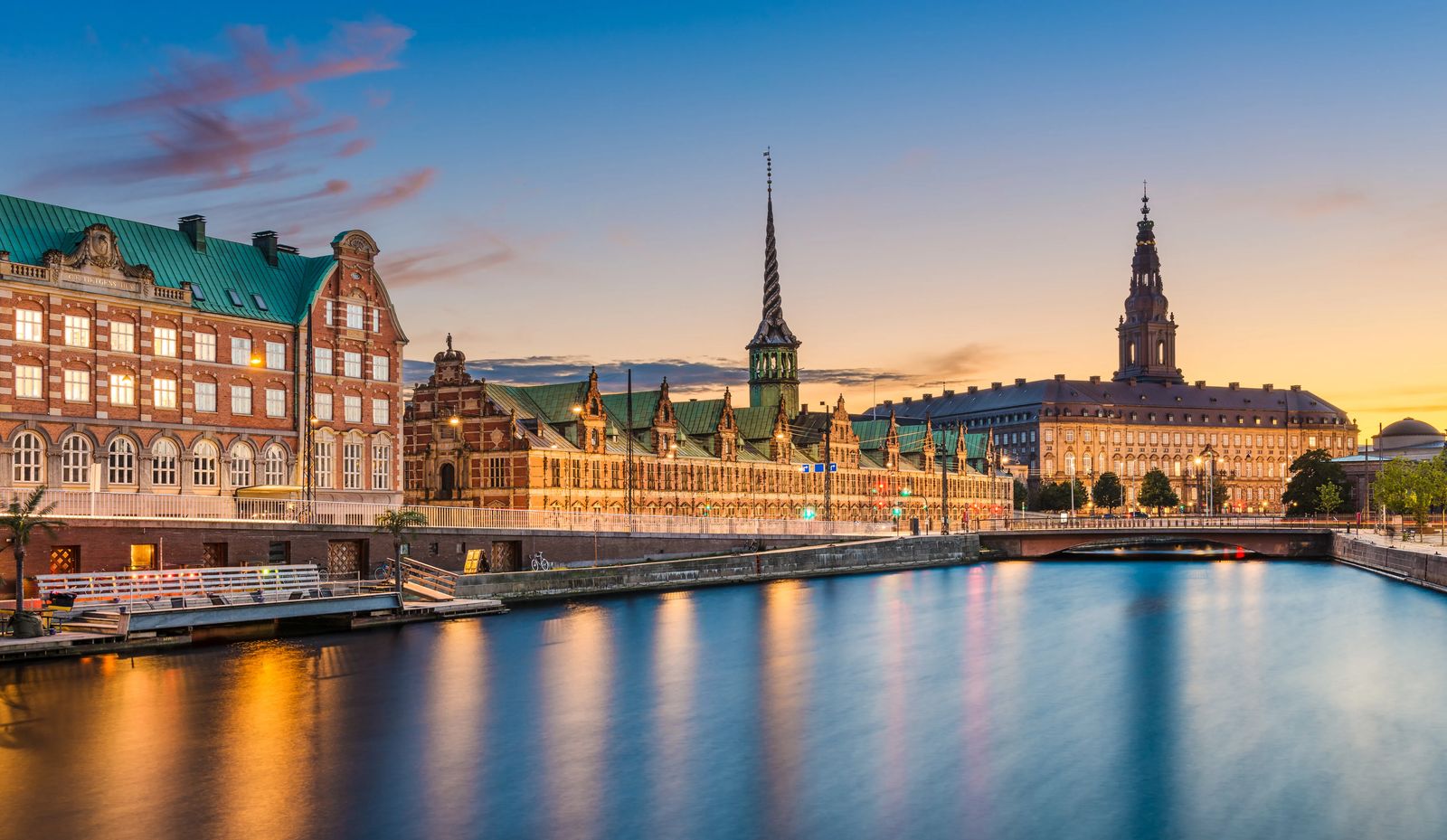
Jorcks Passage
Right in the heart of Copenhagen you will find Jorcks Passage with a glass ceiling! It is loaded with old buildings, bold architecture, and is also where you will find the Danish Royal Theatre. There are shops in the this former street connecting alleyway, but because of the fancy atmosphere, the price tags also reflect that. For me it was a fun place for photo opportunities, but I wouldn't go out of my way to see it if I were you. If you are in the area, it is a nice little spot to relax, especially if there is inclement weather.
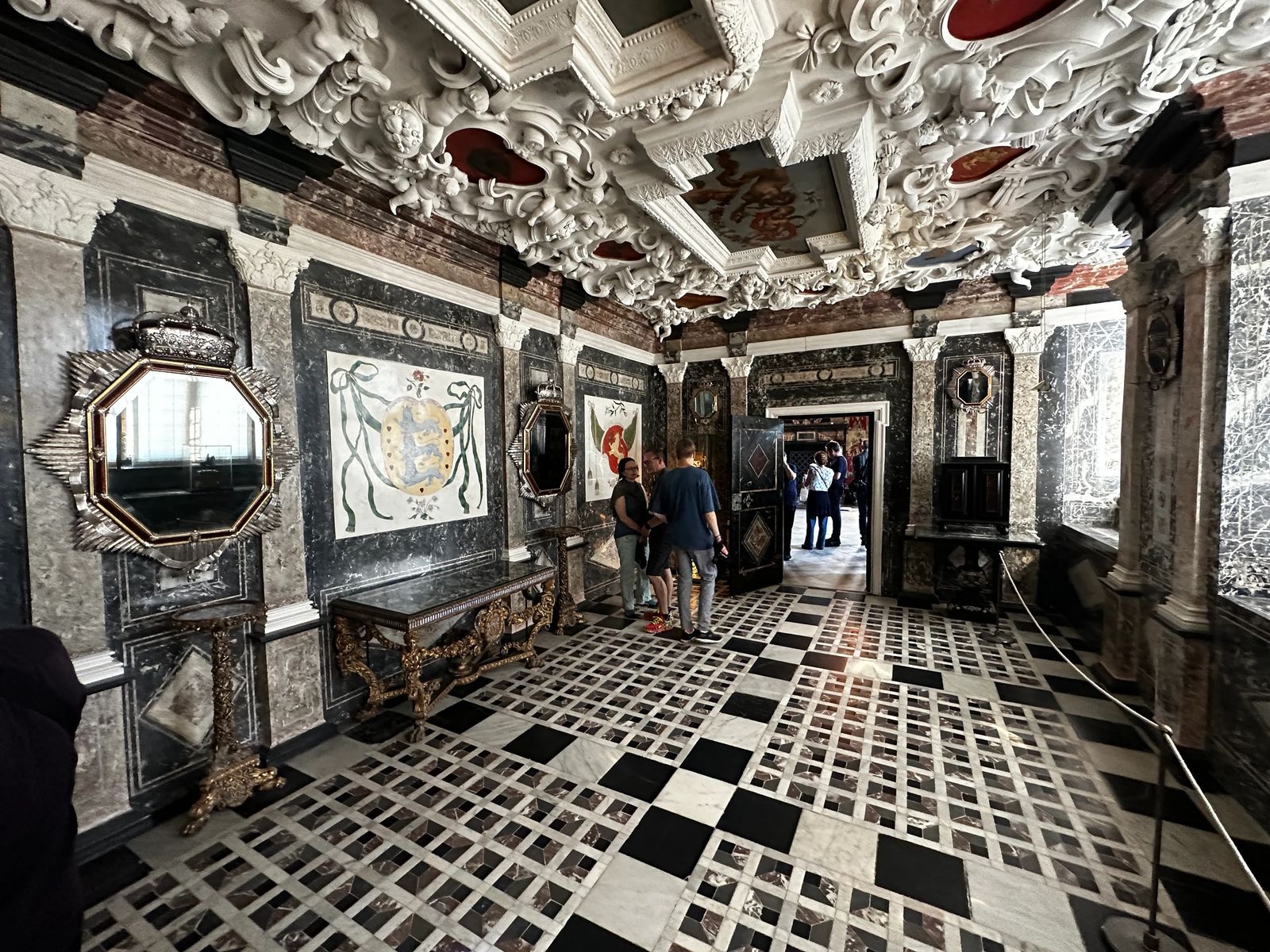
Rosenberg Castle With 17th Century Inventions
This 400-yr-old Renaissance Castle was built by Christian IV, and with his colorful personality it became his favorite castle. This is also where the crown jewels of Denmark are kept, and also where Christian IV passed away.
A beautiful park and kitchen garden supplied the court staying there with fresh food. There were 4 stages of development of the castle over 28 years, with each new ruler or son they seemed to add or alter a bit more.
To get into the castle there are timed entries (thankfully) as it gets quite HOT inside in the summer. There is no AC in here, and they don't use fans nor do they want to open the windows apparently, so dress accordingly & bring a hand fan if you don't want to turn into melted butter by the end. Because this is where the crown jewels are kept (in the basement of this castle) there will be armed guards outside - just to forewarn those skittish around guns.
The Castle
- The Castle is made of Sandstone and red brick walls. It has a gate tower and drawbridge, and a moat. The 1st phase of building the castle was the large tower and great hall. In the 3rd phase, a grand staircase, and in the 4th phase for his son's wedding an expanded wing.
The Moat
- In 1632 Christian IV’s son-in-law to fell into the water and drowned in November despite desperate attempts to save him. It is rumored Christian IV even tried to jump in after him but his guards stopped him. His daughter Anne Katrine - died of grief shortly after the incident.
Writing Room
- Ceiling paintings from the 17th century featuring the Italian Epic Orlando Furioso, it has green silk printed with gold ornaments. Frederik III installed a stair chair so he didn’t have to walk to the second floor himself.
Winter Room
- This is the best preserved room and where you will find the lever mechanism for raising and lowering the drawing bridge (in front of the bay to the right). While I looked feverishly for this, I didn't end up finding it, so let me know in the comments below if you did - and give the other Culture Trekkers a clue on where to see it.
- The paintings in this room are all from the Netherlands.
- The paintings on the ceiling represent the Feast of the Gods and Fall of the Giants.
- Christian even had an one of the first intercom systems installed in this room. You can call down to the Wine Cellar, the room above, and to the gable room. Pretty 'modern' amenity for the 17th century.
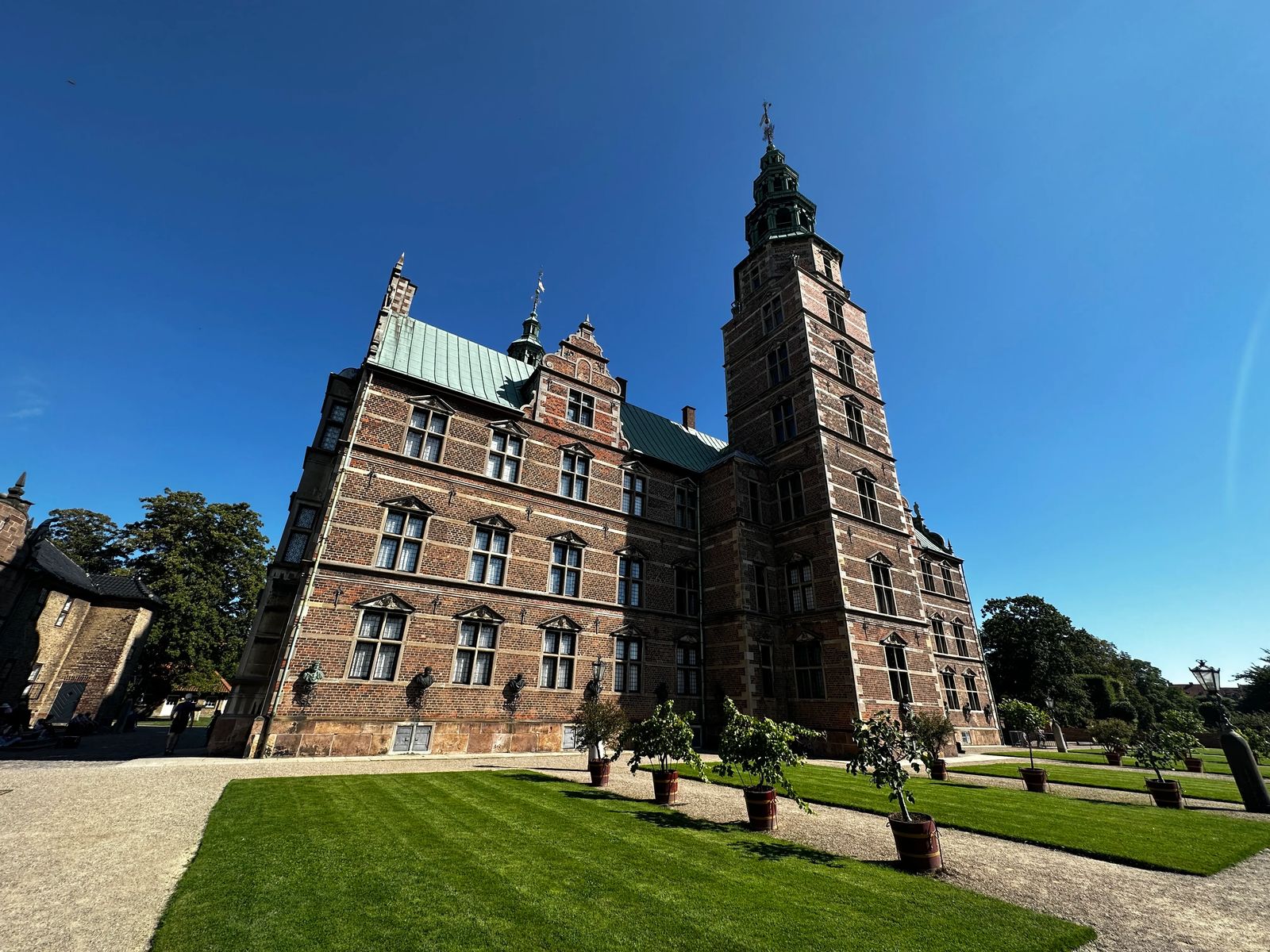
Bedroom
- This is where Christian IV died on 28th February 1648. The clothing you see in the glass case belonged to Christian IV, looks a little like what I imagine an old pioneer Grandma would wear honestly - but hey - guess it was the style.
- The stucco ceiling shows the Gods of the earth, heavens, and oceans - with a central painting of the Greek God, Zeus on Mount Olympus.
Toilet
- The 'secret' is what he called his toilet, there are three in the castle with its own chute. A water cistern would flush the fluids out into the moat. After the army stayed here and years and years of dumping the human waste into the moat, the castle developed a certain....smell...and was later nicknamed 'old reeky' - kind of like the pit below Edinburgh Castle that is now Princess Gardens.
The Dark Room
- Antechambers turned the bed chamber to the King Frederik IV and his Queen.
- In here you have the striped tapestries, scalloped pelmets, tassels.
- It was rumored that Frederik IV had a devilishly cruel armchair that forced people to take a bath with scouring brushes. The visitors arms were strapped down, with cold water piped into the chair - then when they would stand up a trumpet would toot.
Garden Room
- This was the toilet in Christian IV’s bathroom, but was converted into Frederik IV and Queen Louise's bedroom after he died. All the objects in the room are from their Frederick IV & Louise’s time.
Marble Room
- Frederik II converted this room into an absolutism - for those not familiar - absolutism is a bit like a dictatorship. All theological, philosophical, and political matters were passed across the monarchs desk. The idea of absolutism typically happens after a long period of war in the region, when there are heavy taxes or instability in the kingdom.
Stone Corridor
- Where you can see Christian IV’s pedigree, this takes up about 3 normal sized rooms and is interesting to see all the different marriages.

Stolperstein
Stolperstein is a remembrance project where a 3.9 inch (10 cm) cube is put in the paving outside of the last known home of the person who died under Nazi occupation. If you are visiting Europe, there are about 70,000 of these golden pavers in 1200 different cities throughout Europe.
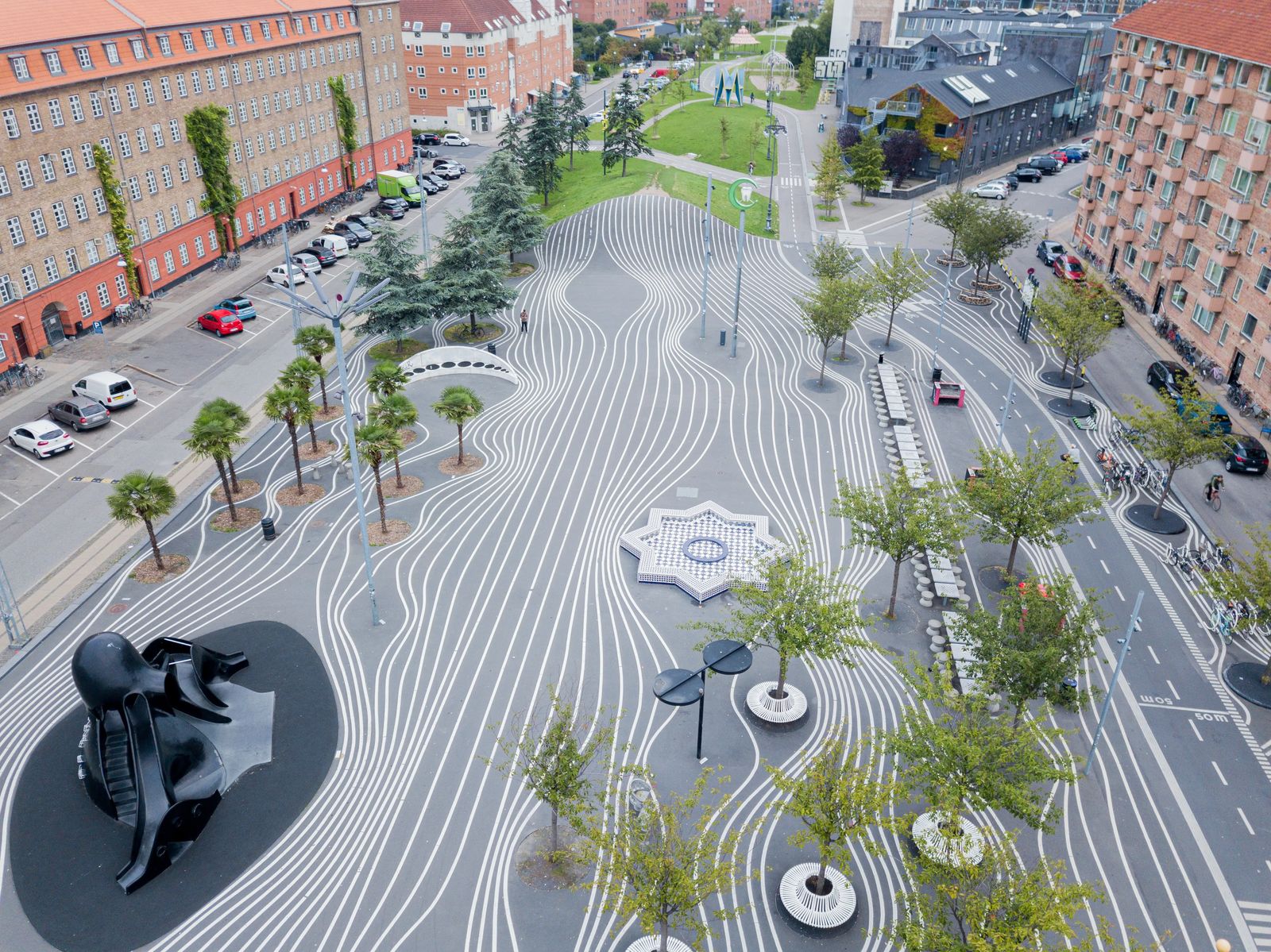
SuperKilen
This former railway station space itself if broken up into three different zones: The Red Square, The Black Market, and The Green Park.
The Red Square covering a wide public walkway in angular neon pink, orange, and red shapes. This area is supposed to represent recreation and modern living in Copenhagen.
The Black Market consists of black asphalt which has a series of tight white lines that curve and zag across the square. In the center you can find a shiny black abstract octopus. You can also find a fountain, BBQ grills, and lounge like area where locals meet - it is said to represent a sort of living room.
Green Park is supposed to represent nature, with rolling hills, carefully manicured trees in all shapes and sizes, and areas for walking the dog.
This Superkilen Park is a bit like walking through an artists playground, with all the shapes, colors, amenities, and different themes and lamps and features that were inspired from 50 different countries. There is a bench from Brazil, a street lamp from Iraq, palm trees from China, a trash can from England. It is an assault on the imagination, and boy does it help it run wild with creative ideas. So if you are a creator, artist, or just like to admire imagination on display - then I wouldn't skip this place.
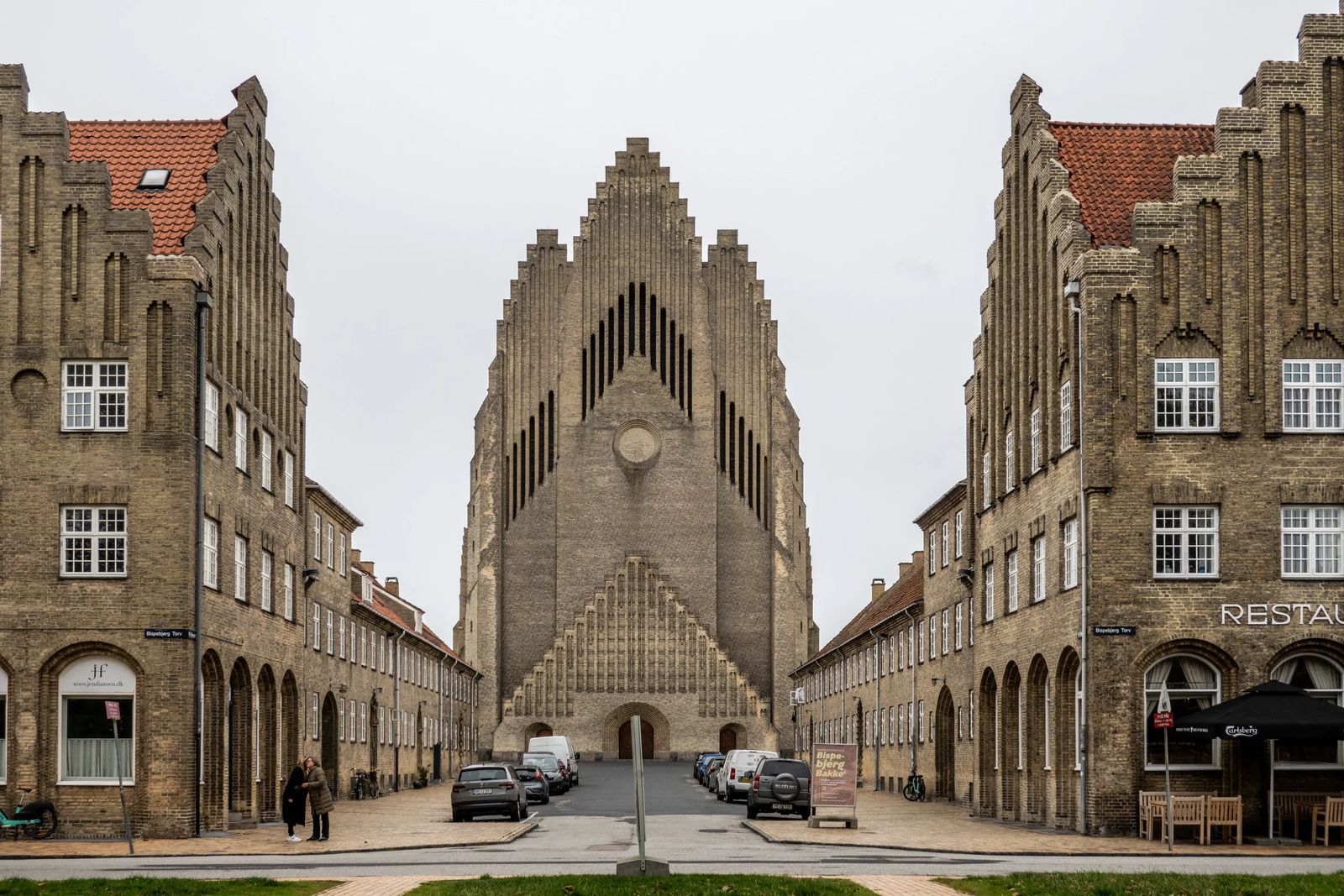
Grundtvig’s Church
This futuristic Gothic church has 6 million bricks but also a minimalist look that is the best representation of Gothic vertical architecture. It is a church dedicated to the Danish philosopher (ironic), historian, poet, and political reformer. While I wouldn't go out of my way to see it personally, if you are in the area, or a fan of architecture then it isn't one to miss.

Roskilde
Head to the Danish island of Zealand (30 min away from Copenhagen) where you will find an 11th century Viking vessel and active boatyard. It also holds the tombs of 38 Danish Kings and Queens, and sits right next to the Contemporary Arts Museum.
If you like ancient history, then stop by the open-air museum that recreates Stone age and Viking life. This is also where the Danish Music Festival is held every year.
Fun fact: The Rockslide Cathedral is a UNESCO heritage site! It was built in the 12th-13th century and was the first Gothic Cathedral to be built entirely of brick.

Legoland
Starting as wooden blocks in 1930's by a carpenter Ole Kirk Christiansen, which morphed into injected molded plastics. Denmark is the home of LEGO, and there is a park near Billund Airport that is completely dedicated to all things LEGO.
You can visit the LEGO House or Legoland Billund resort complete with games, rollercoasters, water rides (50 different ones), and a miniature Lego world built of more than 20 million Legos.
If you buy online you can get some discounts ie/ a 1 day ticket at the counter is 499 DKK ($72.69) while online it is 329 DKK ($47.92), a combination ticket will run you around 629 DKK ($91.62). The combination ticket gets you entrance to both the LEGOHouse AND LEGOland resort.
A visit is sure to have lasting memories of a colorful journey through the imagination of this timeless toy that has remarkably spanned generations - even in todays world of short attentions spans.

Agneta & The Merman Statue
Right near to Christiansborg Palace and Borsen is a different type of mermaid statue, other than the famous Little Mermaid statue near Osteport. This one is right off of Slotsholm Canal next to the Højbro Bridge, and is a tale of Agnete, who fell in love with a merman.
With promises of love and unending adoration she left her land family and lived with him, having seven sons. One day she heard the bells of her old church, and became curious. After inquiring, she learned it was in honor of her father who had died of heartbreak while searching for her. An overwhelming homesickness took over her, and she abandoned her seafaring family and never returned.
The statue is of her forlorn merman reaching up to the land with his seven sons, pining after his lost love.
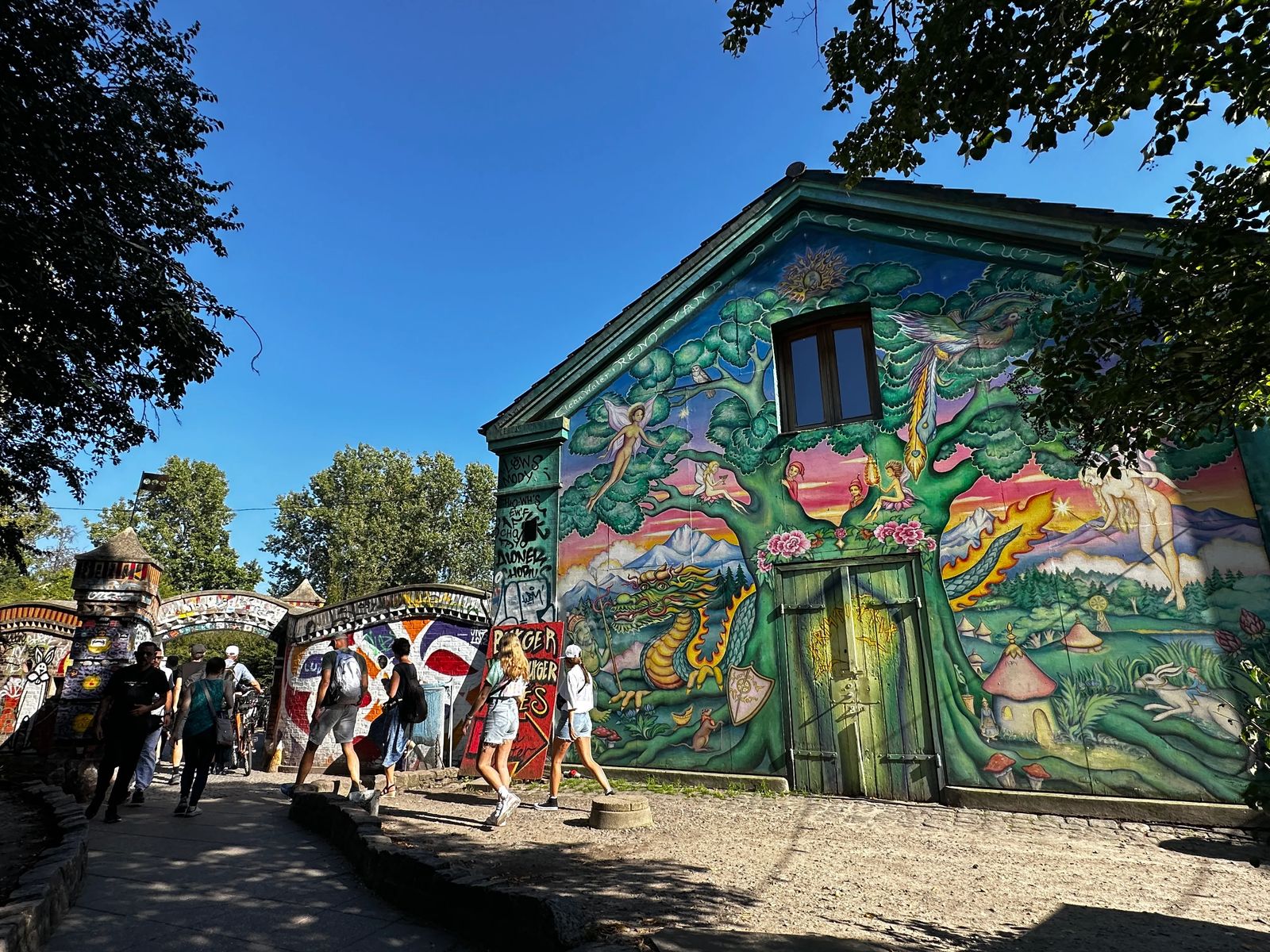
Free City Of Christiana
While some say it was established in 1971 when 1500 people moved to this area establishing a free city for themselves. It was once an area for old army barracks, and was quickly transformed into the free city of Christiana, with 'Pusher Street', where, initially, marijuana was sold in street stalls free from government prying eyes.
There was a huge drug trade here, with ecstasy, heroin and marijuana. After several people died they took everybody here, put them in 'The Ark' for 40 days and 40 nights and they all came out clean. After that it was mainly marijuana that was traded.
The gangs here that were involved were Mackrel, until Hell's Angels moved in and has controlled it every since then. It is estimated that there is a 1 billion Danish crown drug trade that happens here, and you cannot videotape AT ALL, especially on pusher street, where they sell most of the marijuana. A journalist tried to videotape and had his phone shoved up his butt, so.... consider yourself warned.
While it is still technically part of Denmark, and police do regularly do 'raids' through the area - it is considered a legally bought piece of land in Denmark. The only way to be a part of this city is to either be born into it, sleep your way into it, or know someone who will let you into it. The political system here is basically like a gathering at town hall, where every change to the governing body of the city has to have a completely unanimous vote in order to have any laws changed.
Is visiting Christiana worth it? I think if you are curious, and don't mind a bit of second hand marijauna smoke then yes. The colorful murals, artistic hippie dippie freedom they have is really interesting to see. People watching here is fascinating as well. Just have realistic expectations about the way things look. There won't be manicured gardens, trash litters the area, a lot of people look like they haven't showered in awhile. While I only visited once, my impression was kind of like going camping in the middle of the city sitting at a picnic table with a bunch of artistic hippies who like to either talk otherworldly philosophy or body paint with you, lol. Just keep in mind the locals aren't keen on tourists, and they DO NOT like feeling like they are animals in a zoo with tourists taking photos and videos of them, their homes, or their private lives.
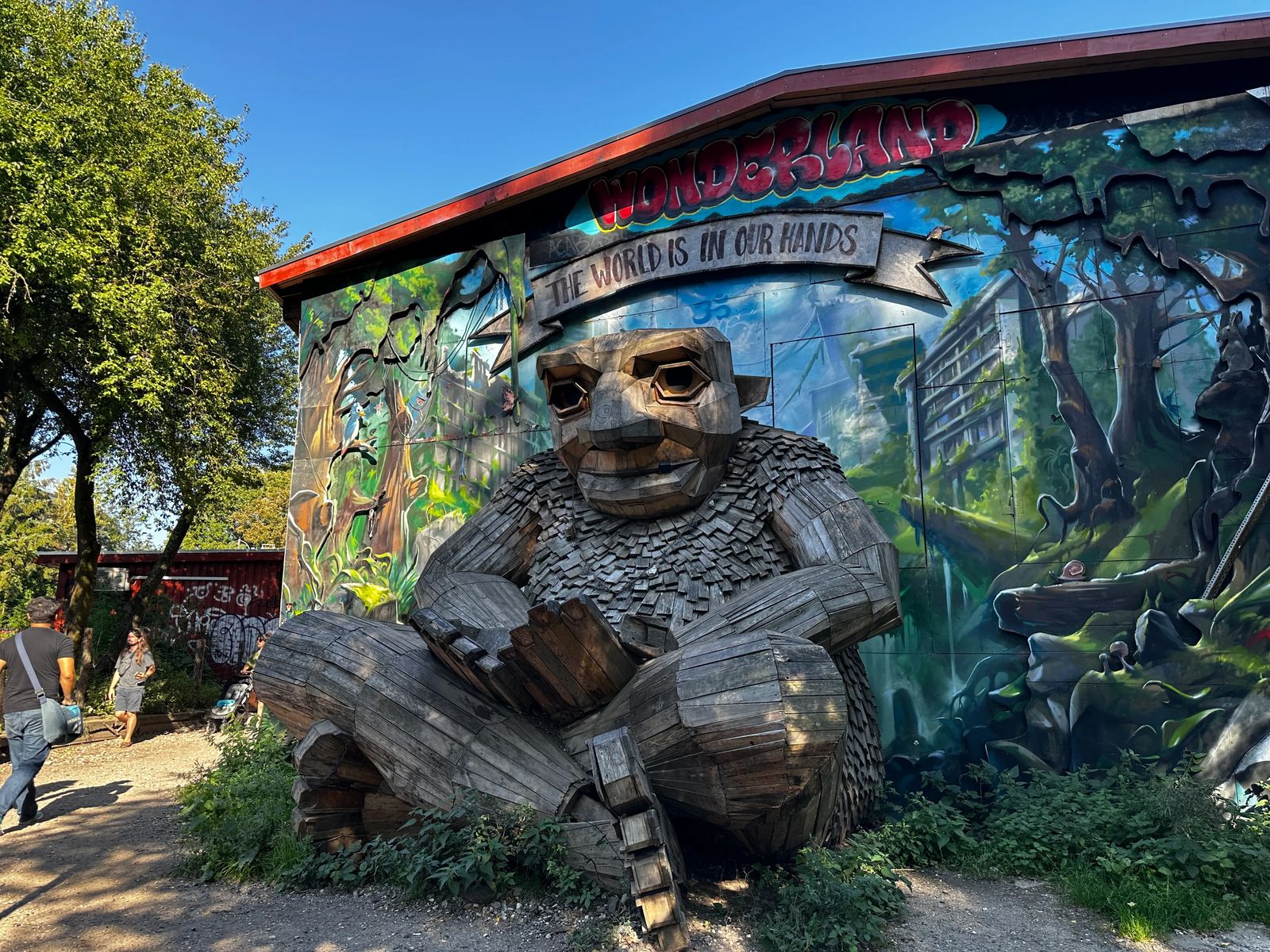
Green Jorge
Located in the heart of Christiana lies a giant wooden troll called Green Jorge, with the words behind him reading "The World Is In Our Hands". These trolls are made by Thomas Dambo from recycled materials of wood to remind us to live Green. Thomas Dambo has trolls all over the world, even a troll hunting map, a book complete with stories etc... I visited some of his trolls when I was in Maine, and it was a lovely story that had heartfelt reminders about how we need to better take care of our earth. There are many many many of his trolls throughout Denmark, so open his TrollMap and see if you can find them all while visiting!

Kulturtårnet
Instead of climbing to the top of Church of Our Savior (400 steps), you can walk up a few steps to Kulturtarnet. On top of the Copper Bridge with 360 views of Copenhagen this old river tower has turned into a quaint cafe. While the selection is a bit small, the coffee is good, especially on a cool morning overlooking the river and the boats lazily passing by below.
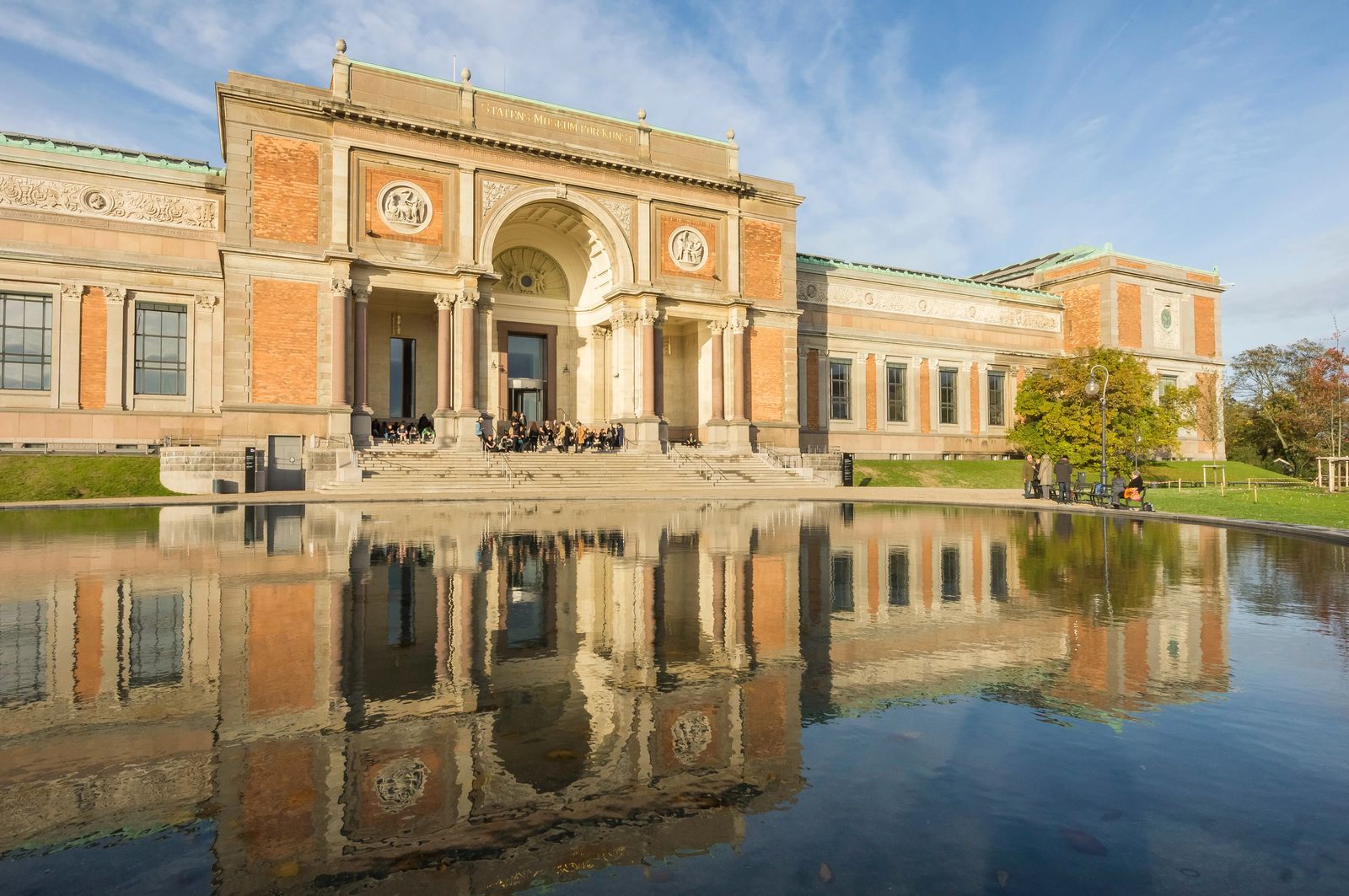
Denmark National Museum
Open 10 am - 6 pm
This museum houses the cultural history, Danish Prehistory, and ethnographic exhibit. You can also join Vikings on a raid, discover the Middle Ages, Renaissance, Voices of the Colonies, their Ethnographic collection, Children’s Museum. They do have Audio guides along with public and private tours
The reason I included this museum specifically is because this is where you learn what the Danish word “hygge” means. I feel as an American, it is sad - but true, we need to learn the 'art of doing nothing'. We live in such a hustle culture in the states, and it has become so normalized to do so, that we often end up feeling guilty for 'doing nothing'.
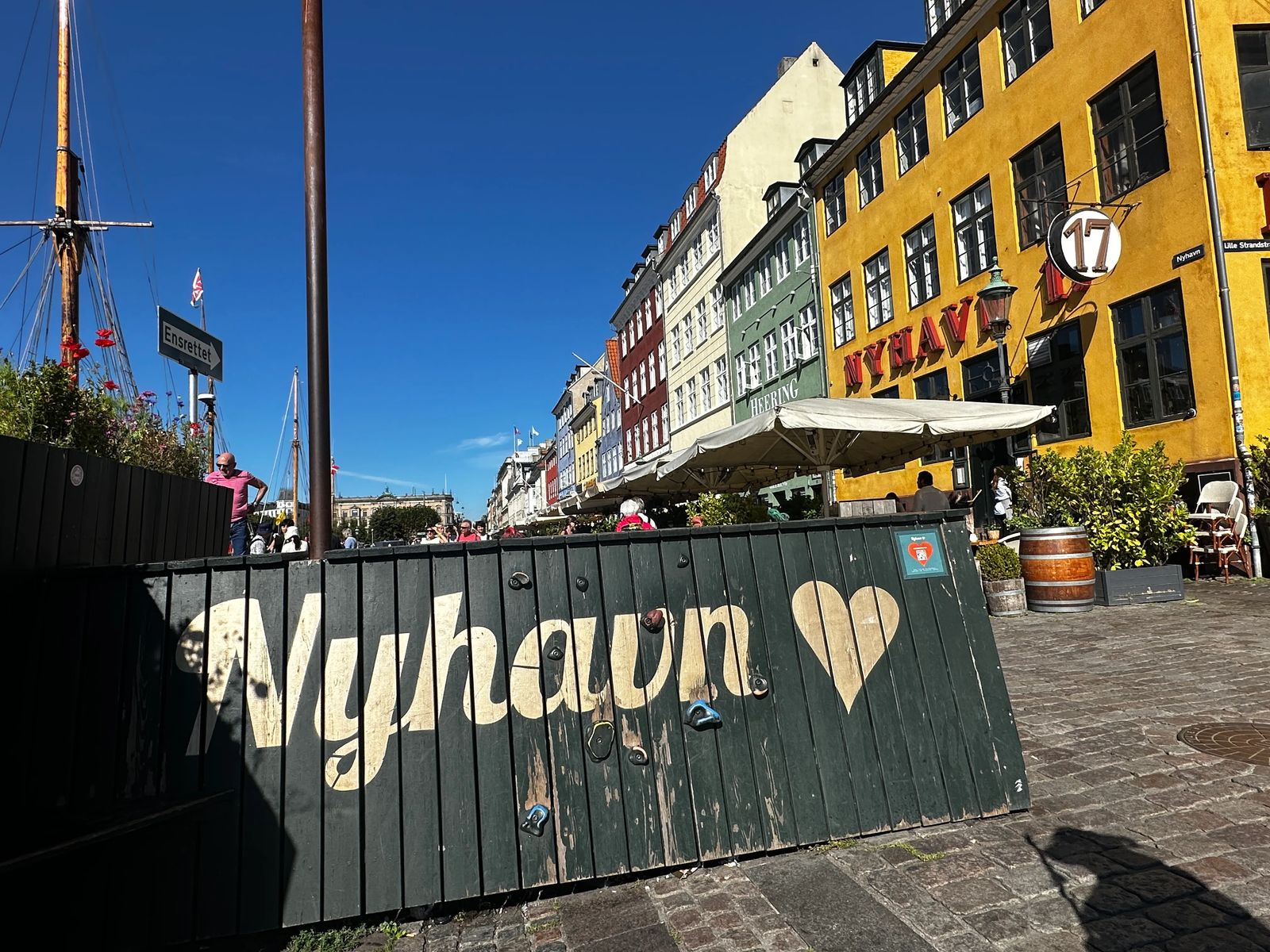
My Takeaway of Copenhagen and Things To See There
If you are an artist, love history, vikings, art, innovation, quirky stories, toys, amusement parks and impeccable food choices then Copenhagen Denmark should be on your list of places to see. The public transport is easy to use, and the ample choices of things to do really makes it a great place for group trips too because there really is something here for everyone.
Being a solo female traveler myself, I did feel quite safe in the city, even after dark. I would avoid Christiania area at night though for sure. While I do want to say it is a perfect destination for first time solo travelers, it may not be for those who are on a budget.
Copenhagen is a place I would visit again, there is A LOT I didn't get to see, even with a packed itinerary. It is a wildly expensive place to stay for accommodations though! Even looking at the single or double rooms at a hostel near the city center for one night were upwards of $180 per night! If you want to stay in an actual hotel, or even an Airbnb - you are looking at $280+ a night. In the off season though, you will find places from $48 and up, they may be a bit outside the city though so just be aware of that.
If you are traveling during the summer, I highly recommend to book your hotel as SOON as possible! I have my Stay22 map linked below that compares all of the accommodations across several different platforms to help you out. We personally found that renting a house boat was the cheapest option, especially when split between the three of us.
All in all it was a wonderful, funny, beautiful visit to Copenhagen and I would recommend you to visit if you can. If you have any questions about visiting, make sure to drop them in the comment section below - I'm sure it will help other travelers out as well.
Guided Tours of Copenhagen
Like it? Pin it for later! Sharing is caring ;)
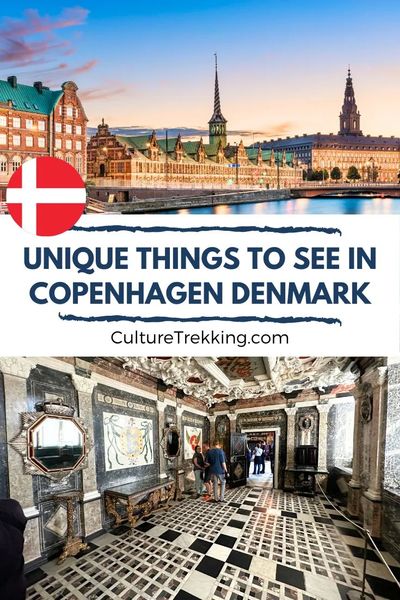.jpg?fit=outside&w=1600&h=2399)
.jpg?fit=outside&w=1600&h=2399)
.jpg?fit=outside&w=1600&h=2399)
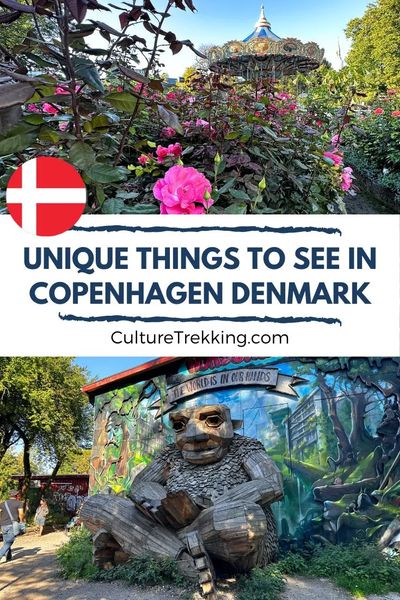.jpg?fit=outside&w=1600&h=2399)
Where to stay in Copenhagen
Accommodation is VERY expensive, luckily I was traveling with two friends and we found that renting a house boat may be the cheapest option. The next cheapest (with better accessibility) is a single room in a hostel. I put a map below so you can compare the different accommodations available across several different platforms.
Latest Articles On Culture Trekking
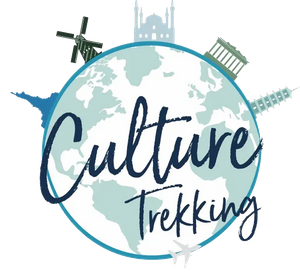

Welcome to Culture Trekking!
My name is Janiel, a leader in the travel industry with over 20+ years of experience with international travel. I specialize in solo female travel, cultural connections, sustainable adventures, food and history to help make your travel experiences fun, meaningful, and delicious. My experience in travel, and my personal story have allowed me to get published in Fodor's Travel, Atlas Obscura, Metro.co.uk, Trip Advisor, and multiple Podcast interviews. You can find me on pretty much every social media channel YouTube, Instagram, Twitter, Facebook, Pinterest, TikTok. To read more about me and my story click here. If you are a brand and would like to work with me, click here.













